The Mississippi River is the fourth-largest river in the world and the second-longest in North America. The river, along with the 19.4 million acres of forested terrain in Mississippi, provides a variety of wildlife species with an alluring habitat. It also contributes significantly to hydroelectricity and industrialization for eleven states.
Along with recovering populations of mussels, the river is home to more than 120 different species of fish. Along the river’s banks are otters, coyotes, deer, beavers, muskrats, and other creatures. Of course, this river is also home to hundreds of magnificent bird species, either migrating or year-round residents. But are there owls on the Mississippi River? This article lists eight types of owls found on the Mississippi River.
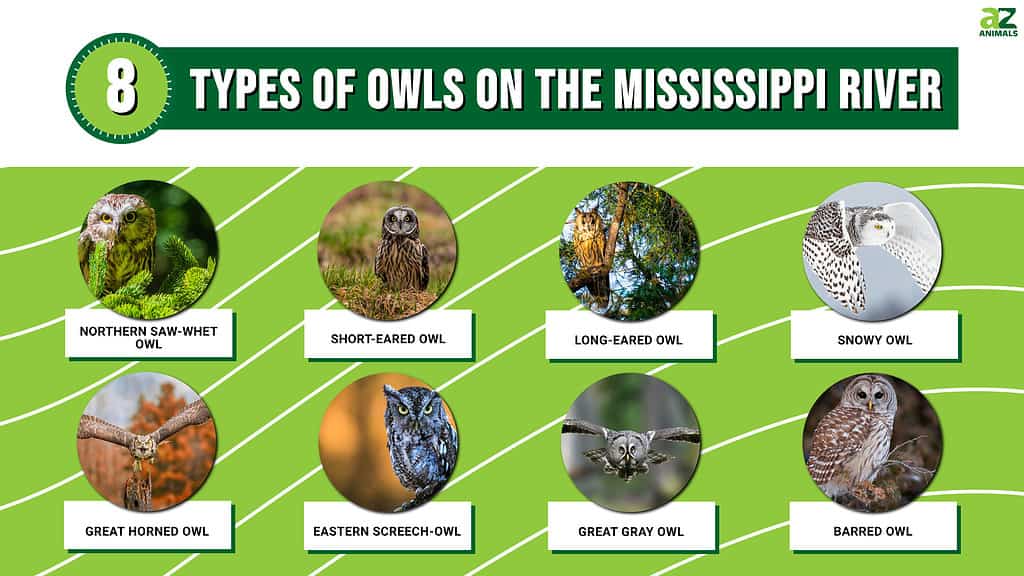
1. Northern Saw-Whet Owl
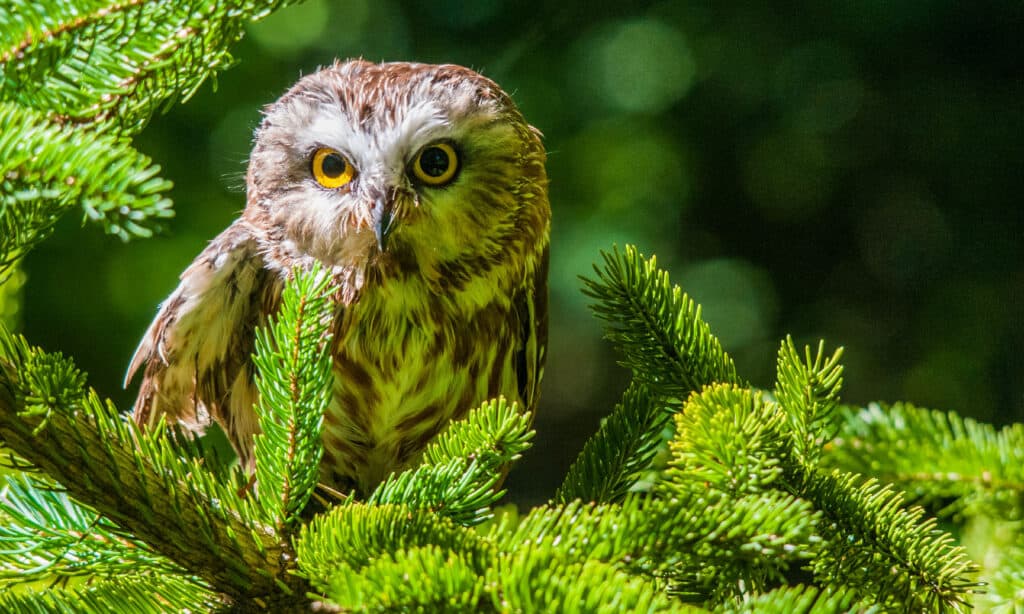
Northern saw-whet owls can be found in mature, deep forests.
©iStock.com/bookguy
The northern saw-whet owl is a small, non-breeding owl that lives all over Mississippi. They tend to stay near tree trunks, and prefer to roost in evergreen trees. Their mottled brown plumage helps them blend in with the surrounding trees when they are poised motionlessly. These owls favor mature, deep forests, and most of their diet consists of small mammals like mice and voles. They are the smallest owls in the Mississippi.
2. Short-Eared Owl

The global short-eared owl population is estimated to number 1.2 to 2.1 million mature individuals.
©iStock.com/Harry Collins
Except for Antarctica and Australia, all of the world’s continents are home to the medium-sized short-eared owl. They inhabit open spaces with sparse vegetation, such as meadows, prairies, and coastal grasslands.
The best time to spot this fairly comical-looking owl in Mississippi is during the winter when it can be seen all around the state. Although short-eared owls favor grassy, open areas, they have successfully adapted to people by moving into airports as well, where the arrival of aircraft displaces insects that they may swoop down and catch.
3. Long-Eared Owl
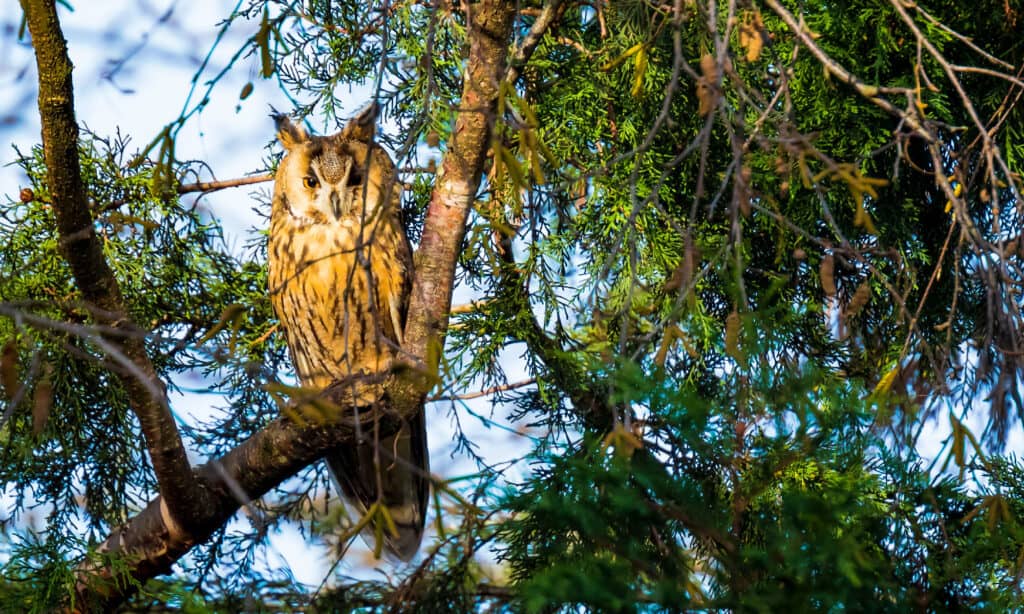
Long-eared owls’ ideal habitat is near woodlands or pine stands with pastures and grassland.
©SanderMeertinsPhotography/Shutterstock.com
Apart from North America, the long-eared owl can also live in Madagascar, northern and eastern Africa, parts of Europe, and parts of Asia. During the months when they are not mating, they are occasionally seen in Mississippi, but they are uncommon and difficult to locate there. Their ideal habitat is near woodlands or pine stands with pastures and grassland.
Although they like to roost in the forests, they require broad spaces for hunting. These birds occasionally roost in groups, which makes it easier to find them.
4. Snowy Owl
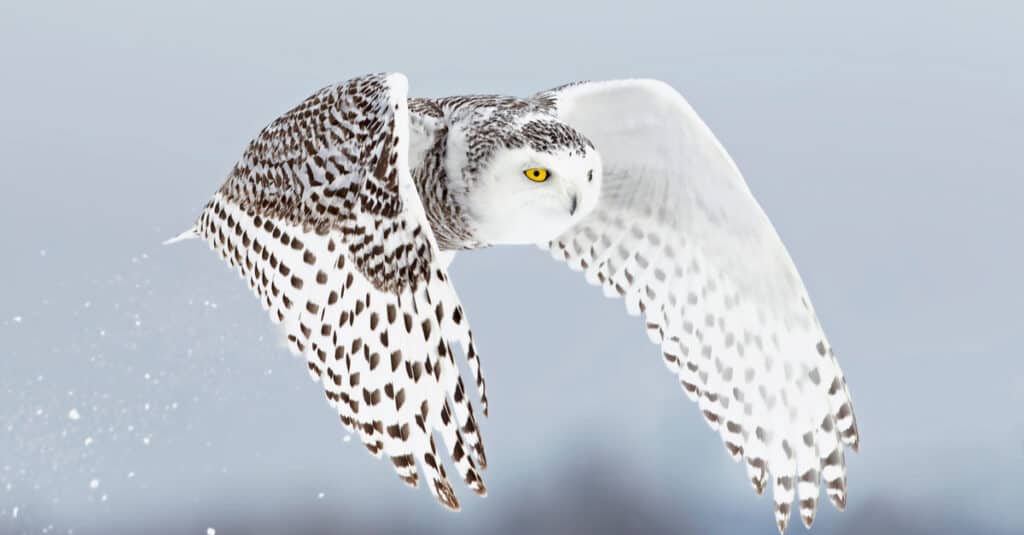
Due to their dazzling white feathers, snowy owls are easier to notice than other owls.
©Jim Cumming/Shutterstock.com
Snowy owls are avian creatures that spend most of their time in the icy, treeless tundras near the North Pole, while they are infrequently seen in southern Canada and the northern United States. The thick coating of feathers that wraps them from head to toe makes them the heaviest owls in North America.
Although Mississippi is not part of the snowy owl’s recognized winter range, the state has seen one at least twice. Due to their dazzling white feathers, snowy owls are easier to notice than other owls if they are nearby. As adults, snowy owls frequently leave their nesting area since they are intrepid.
5. Great Horned Owl
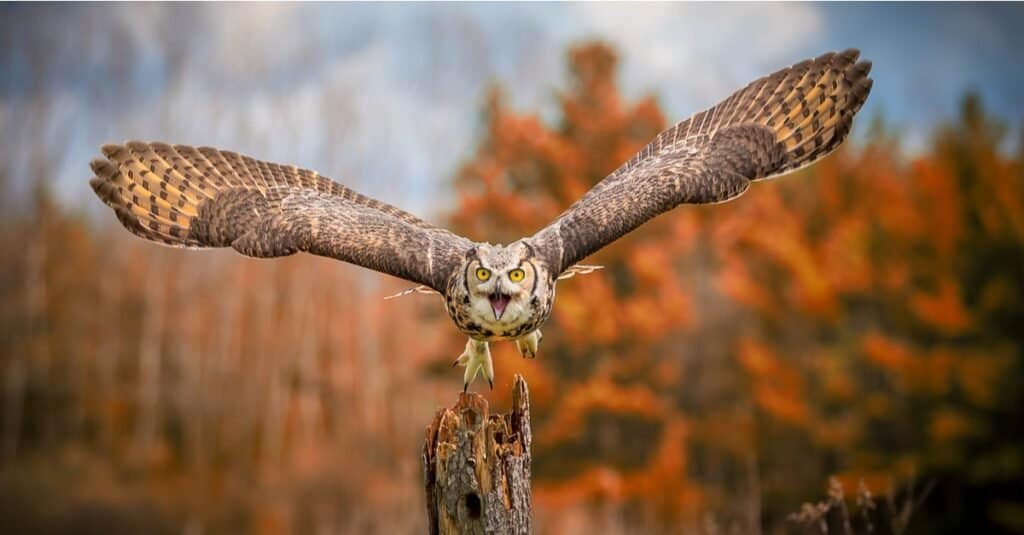
The great horned owl is one of the most dangerous birds because of its talons, curved sharp beak, and its aggressive way of hunting.
©Imran Ashraf/Shutterstock.com
The Americas are home to the enormous predatory great-horned owl. It appears in various colors and is among the owls with the most geographic diversity worldwide. It is the most prevalent owl in Mississippi and prefers semi-open regions with lots of room between trees. It receives its common name from its two tufts that resemble horns and its loud, booming hoot.
Great horned owls have incredibly soft feathers that help mask the noises of their flight when they are on the hunt and insulate them against the cold winter weather.
6. Eastern Screech-Owl
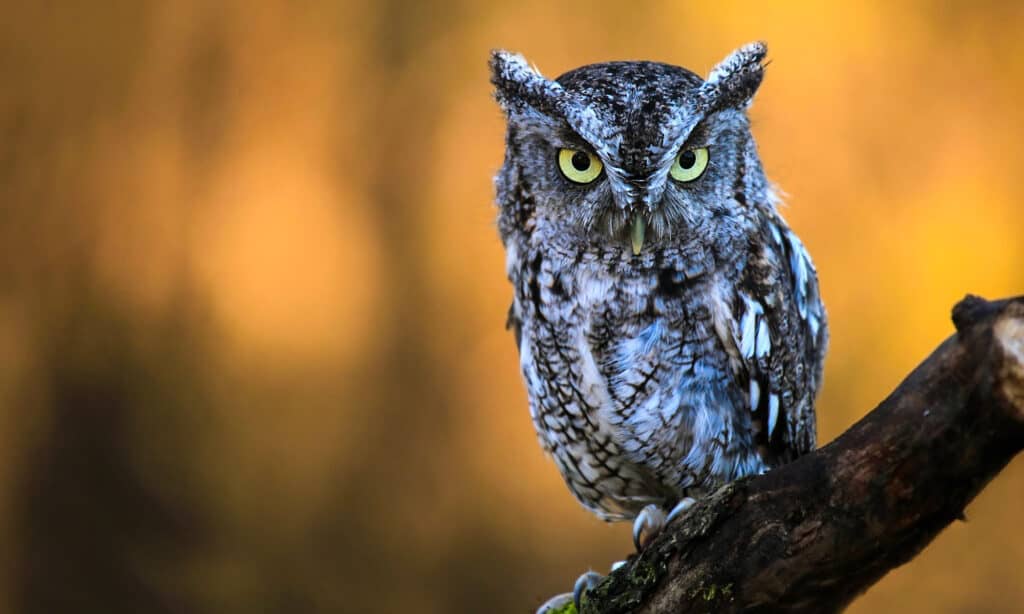
Eastern screech owls are rarely observed during the day because their feather patterns, which blend in with tree bark, offer excellent concealment.
©mlorenz/Shutterstock.com
In Mississippi, the eastern screech owl spends the entire year living anywhere there are trees. They are very prevalent east of the Rockies and have acclimated well to people. Thus, they are frequently found in backyard nest boxes.
Gray, brown, or red are the three possible feather colors for eastern screech owls. They are rarely observed during the day because their feather patterns, which blend in with tree bark, offer excellent concealment.
European starlings are their largest problem because they routinely drive them out of their nesting location and take over to care for their own young.
7. Great Gray Owl
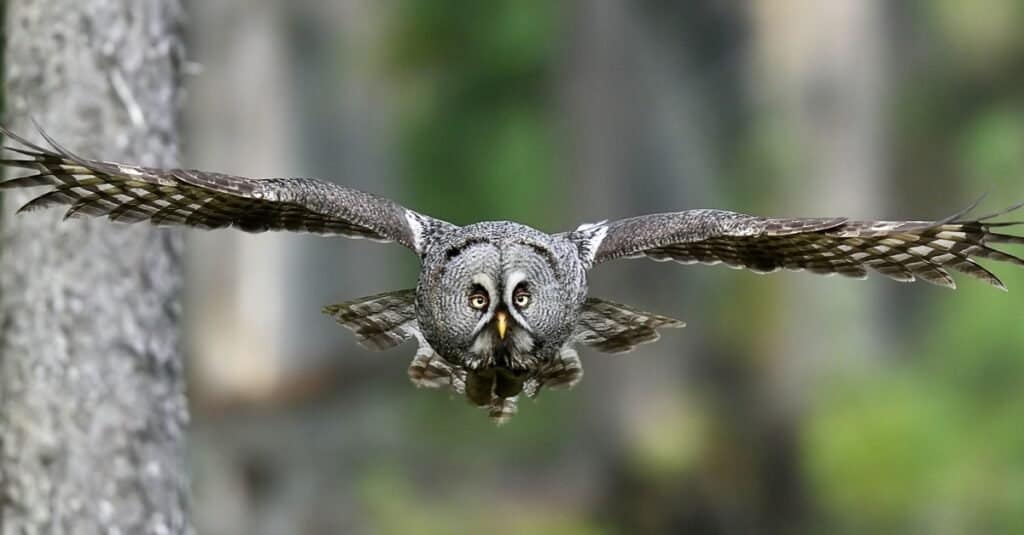
Great gray owls typically keep to themselves and steer clear of populated areas.
©Erik Mandre/Shutterstock.com
One of the country’s tallest owls, the great gray, has a long tail and broad wings. They have enormous facial disks and big heads for owls. They are much larger than most other owls, although not heavier. Most of their mass comprises feathers.
Great gray owls typically keep to themselves and steer clear of populated areas. Despite their size, they discreetly hover on the edges of meadows or forest patches and are hardly noticeable.
The great gray owl has a silvery gray overall color and is dotted with tiny white, gray, and brown streaks and light bars. Many great gray owls may migrate into the northeast during a population decline of voles and other rodents in the boreal forest, thrilling birders.
8. Barred Owl

Many barred owls never venture outside a 10-mile radius during their lifetime.
©Jim Cumming/Shutterstock.com
The barred owl is frequently heard in mature forests and wooded wetlands, and its distinctive hooting call, “who cooks for you?” is particularly widespread throughout Mississippi. The stunning brown and white striped barred owl is widely distributed and can be seen all year long in Mississippi. These birds particularly enjoy being local, many never venturing outside a 10-mile radius during their lifetime.
Despite being a huge bird, it cannot be easily spotted, especially in deciduous forests in the winter when its coloring lets it blend in with the tree branches. However, barred owl sightings are increasing in suburban areas.
Summary of 8 Types of Owls on the Mississippi River
| Number | Type of Owl |
|---|---|
| 1 | Northern Saw-Whet Owl |
| 2 | Short-Eared Owl |
| 3 | Long-Eared Owl |
| 4 | Snowy Owl |
| 5 | Great Horned Owl |
| 6 | Eastern Screech-Owl |
| 7 | Great Gray Owl |
| 8 | Barred Owl |
The photo featured at the top of this post is © AJ Gagnon/Shutterstock.com
Sources
- NpSpecies, Available here: https://irma.nps.gov/NPSpecies/Reports/SpeciesList/Species%20Checklist/MISS/5,2,3,1,4,11/true
- Wildlife Informer, Available here: https://wildlifeinformer.com/owls-in-mississippi/
- Bird Feeder Hub, Available here: https://birdfeederhub.com/owls-in-mississippi/
Thank you for reading! Have some feedback for us? Contact the AZ Animals editorial team.






